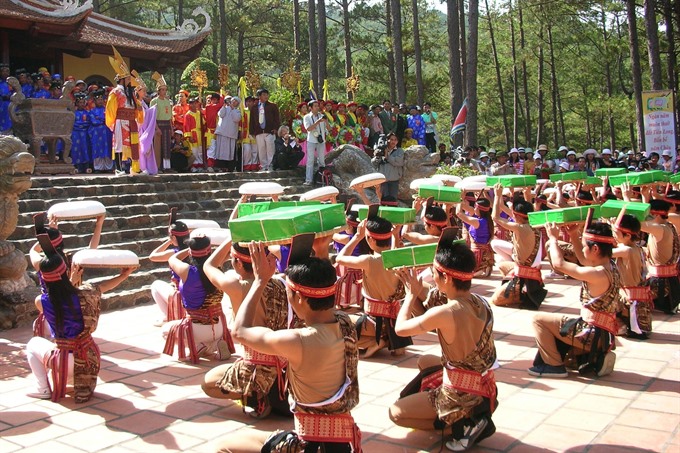 Life & Style
Life & Style

An annual pilgrim festival dedicated to the Hung kings will be organized between April 1 and 6 and hosted by the northern province of Phú Thọ.
 |
| Symbolic traditional round and square sticky rice cakes are offered to Hùng kings during a worship ceremony held at the annual Hùng Temple Festival. — Photo mytour.vn |
HÀ NỘI — An annual pilgrim festival dedicated to the Hùng kings will be organised between April 1 and 6 and hosted by the northern province of Phú Thọ.
Four localities -- Hà Nội City, northern Thái Bình Province, southern Bến Tre Province and Bình Phước Province – will cooperate in organising the festival.
The plan was drafted at a meeting hosted recently by Phú Thọ Province’s leaders and representatives from concerned localities.
Various cultural activities will take place at the Hùng Temple Complex, Việt Trì City and relic sites dedicated to Hùng kings and cultural figures of the era throughout Phú Thọ Province.
Worship ceremonies, contests to make traditional square cakes and round glutinous cakes, an exhibition featuring local agricultural products, a tennis tournament and art shows will be highlights of the event.
Singers, dancers and puppeteers from Hà Nội City and Thái Bình Province will perform during the festival.
The organising board reaffirmed it would organise a safe, economical and successful festival.
Legend has it that the first Hùng King was the eldest son of Lạc Long Quân and Âu Cơ, who came to power in 2879 BC. He ruled an area covering what is now North Việt Nam and parts of southern China. The area was called Văn Lang and is regarded as the first nation of the Vietnamese people.
Each year, the key ceremony takes place at the Hùng Temple on Nghĩa Lĩnh Mountain in Phú Thọ Province, some 85km northwest of Hà Nội, where Hùng kings built imperial citadel as legends said.
A procession starts at the foot of the mountain and stops at every temple on the ascent. The pilgrims then offer prayers and incense to the Hùng kings on reaching the Hùng Temple. — VNS




